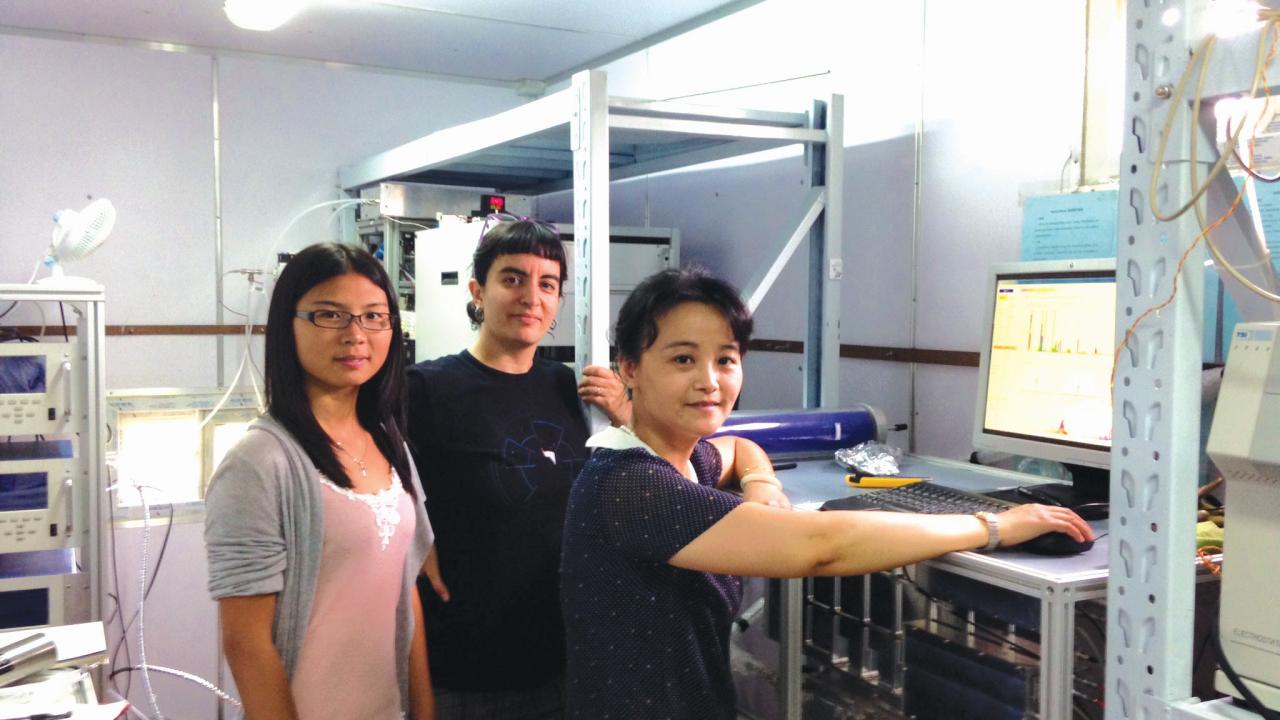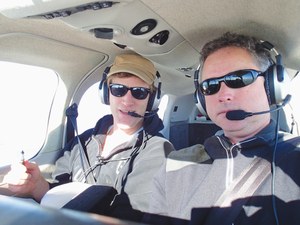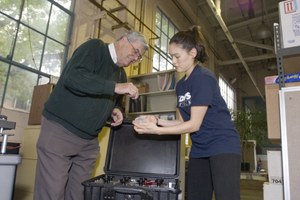
Clearing the Air
UC Davis has a large concentration of air quality experts, including these CA&ES scientists
Qi Zhang
"The atmosphere is like a big reactor that's always cooking stuff," says Qi Zhang, a professor in the Department of Environmental Toxicology.
Zhang and colleagues study the chemistry and physical properties of aerosols—atmospheric particulate matter and aerial droplets—that cause poor air quality and affect human health. Her research has taken her all over the world to analyze air samples with sophisticated equipment.
"There's a lot of particulate matter being emitted into the atmosphere," she said. "We try to understand where the aerosols come from, what is the mechanism that contributes to the formation of particulates, and also what are their environmental and health impacts."
California's particulate matter problem occurs mainly in the winter, especially in the Central Valley. In the summer, the problem is ozone, but the two are related. "There are similar mechanisms that form ozone and secondary organic aerosols," she said.
In the winter, meteorological conditions favor the accumulation of pollutants. The stagnant air and humid conditions typical of a Central Valley winter promote the formation of secondary particulates. Increased emissions, especially wood combustion for heating, also occur during the winter.
While ozone concentration tends to be low in winter, high ozone episodes are frequently observed in summer in the Central Valley. This is caused mainly by intense solar radiation and high air temperatures that enhance chemical reactions. Secondary aerosols are usually co-formed during the formation of ozone.
"Summer meteorological conditions generally favor secondary aerosol production," Zhang said. "We often observe elevated secondary aerosol and ozone concentration in summer."

Ian Faloona
The town of Arvin at the southern end of the San Joaquin Valley has, on some days, the worst ozone air pollution in the nation. Air pollution control district officials wanted to understand why, so they funded Department of Land, Air and Water Resources Professor Ian Faloona to investigate.
In a small plane packed with specialized monitoring equipment, Faloona and UC Davis research colleague and pilot Stephen Conley, took to the skies over the area to measure and map ozone and ozone precursors such as nitrogen oxides. "We do it in a very systematic way," Faloona said. "The chemistry is happening on a molecular level, but the concentrations are controlled in large measure by the fluid flow of the atmosphere."
The key is the "boundary layer"—the atmosphere closest to the earth up to approximately 3,000 feet—where pollutants
can concentrate. "How polluted the boundary layer gets depends on how much the air above is mixing and cleaning out the air down below," he said.
The instruments in the plane enable the scientists to measure that aerial mixing in a precise manner. "We've made great progress because of the techniques we're using," Faloona said. "We're not just measuring the pollution. We're also measuring the meteorology. That's important."
Faloona and Conley have become the go-to guys for this kind of airborne air quality research. They were the first ones to document the extent of the huge Aliso Canyon natural gas leak in Southern California during 2015 and have flown similar missions to study gas leaks in the Four Corners region of the Southwest. Next summer they hope to venture into new territory, mapping methane emissions from thawing permafrost in Alaska.
"This type of research is really in its infancy," Faloona said. "We just hit the technology right at the perfect time."

Tom Cahill
Professor Emeritus Tom Cahill of the Department of Land, Air and Water Resources (and the Department of Physics) is a pioneering scientist who has studied air pollution for the better part of five decades. His early research helped get the lead out of gasoline and reduce sulfur in fuel. In 1977, he conducted the first measurement of atmospheric aerosols and visibility in western national parks, a program that has grown into a national network that monitors visibility at parks, wilderness areas, wildlife refuges, and Native American lands.
Based on Cahill's work on the international transport of Asian aerosols, the National Science Foundation (NSF) asked him in 2003 to create a program in Greenland that measures fine particulate matter in the air and also on the snow and ice. NSF recently extended project funding for another five years.
"Our technology allows us to say where these particles come from—Europe, China, the Sahara desert," he said. "We can pick up a single nickel smelter in Siberia. We spot the plume crossing Greenland and then the data goes into models predicting how the earth handles the sun's light."
Even small changes in the earth's brightness affect its heating and cooling. "Our published data are the most sensitive measurements ever made in atmospheric aerosols for multiple elements," Cahill said. "Our job here at UC Davis has always been to be the best."